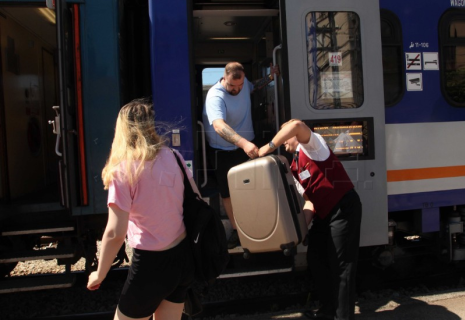
Exploring economic landscape of Montenegro: challenges and opportunities
Montenegro, a picturesque country in Southeast Europe, boasts a diverse and steadily evolving economy. Despite its small size and population of approximately 620,000, Montenegro has strategically leveraged its geographic location, natural beauty, and international partnerships to shape its economic structure. Below is an in-depth look at the key sectors that define the Montenegrin economy, CE Report reports.
1. Tourism: The Economic Cornerstone
Tourism is the backbone of Montenegro’s economy, contributing over 20% to the GDP. The country’s stunning Adriatic coastline, historical sites, and national parks attract millions of visitors annually. Popular destinations like Kotor, Budva, and Sveti Stefan have become international hotspots for luxury travel. Montenegro’s efforts to position itself as a high-end tourist destination include investments in upscale resorts and eco-tourism projects.
Tourism growth is also supported by infrastructure development. Major projects like the Bar-Boljare highway aim to improve connectivity and boost accessibility to inland attractions such as Durmitor National Park.
2. Energy and Natural Resources
Montenegro is rich in natural resources, particularly hydropower potential. The country generates a significant portion of its electricity through hydroelectric plants, with the Piva and Perucica dams being notable contributors. Recent efforts focus on diversifying energy sources by exploring wind and solar energy projects to align with EU sustainability goals.
Additionally, Montenegro has reserves of bauxite, an essential ore for aluminum production. While the mining industry has historically been an economic pillar, environmental concerns and fluctuating global prices have led to a re-evaluation of its long-term viability.
3. Agriculture and Fisheries
Although agriculture accounts for a smaller share of GDP, it remains an essential sector for rural employment and food production. Key agricultural products include olives, wine, citrus fruits, and dairy. Montenegro is also known for its traditional culinary products, such as Njeguški pršut (smoked ham) and local cheeses, which have growing export potential.
Fisheries, particularly along the Adriatic coast, contribute to the economy, with a focus on small-scale fishing and aquaculture. Efforts are being made to modernize these industries and enhance their sustainability.
4. Foreign Investment and Real Estate
Montenegro has positioned itself as an attractive destination for foreign direct investment (FDI), particularly in real estate. The government’s pro-business policies, including tax incentives and simplified investment procedures, have drawn investors from Russia, the Middle East, and the EU.
Noteworthy developments include luxury residential complexes, such as Porto Montenegro in Tivat, which cater to wealthy expatriates and seasonal residents. This influx of capital has also stimulated related industries like construction and services.
5. Financial Services
The financial sector in Montenegro is relatively small but steadily growing. The country has adopted the euro as its de facto currency, despite not being a member of the Eurozone, which has provided monetary stability. Banks in Montenegro primarily focus on retail banking and SME financing, with foreign banks playing a significant role.
6. Challenges and Opportunities
Montenegro’s economy faces several challenges, including reliance on tourism, high public debt, and the need for further industrial diversification. However, its EU candidate status offers opportunities for economic reform and access to development funds.
Strategic goals include improving infrastructure, enhancing energy efficiency, and fostering innovation through digital transformation. Efforts to promote green tourism and renewable energy projects are expected to create sustainable growth in the coming decades.
Conclusion
Montenegro’s economic structure reflects a blend of traditional industries and modern initiatives. With a focus on sustainable development and strategic investments, the country is poised to continue its trajectory toward economic resilience and integration into the European Union. While challenges persist, Montenegro's natural advantages and reform-oriented policies provide a strong foundation for future growth.
























